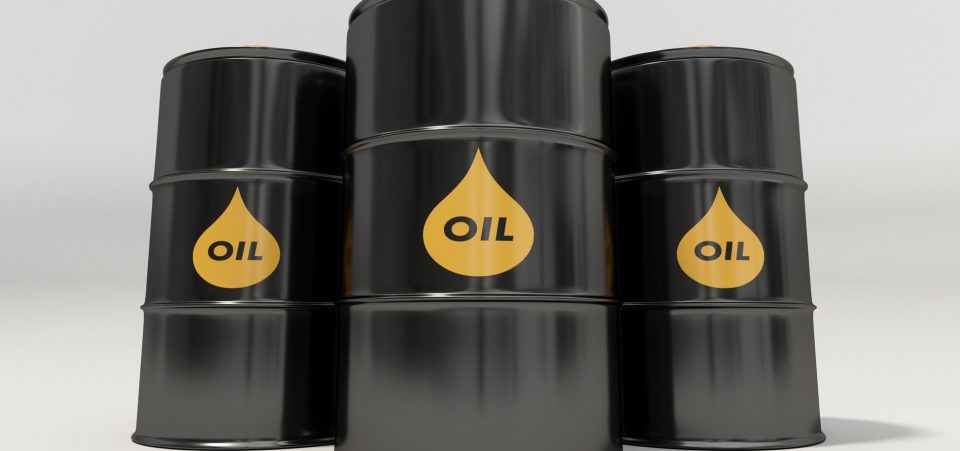Tom Kloza Oil Prediction
The price difference between Brent crude, the international benchmark for oil prices, and U.S. West Texas Intermediate (WTI)—based largely on production in Texas and North Dakota—has dropped since the start of 2018. It’s now around $64.00/barrel. By comparison, Brent crude for the April contract is about $67.00/barrel.
Until a few years ago, WTI was the more popular price index for oil price trends. More recently, Brent (initially based on North Sea oil) has become more “expensive” because it also considers West African and Mediterranean crude. Thus, it represents a larger market. Nevertheless, Tom Kloza’s oil prediction is for prices to drop quickly.
The noted oil expert from the Oil Price Information Service (OPIS) says the oil market is in a huge speculative bubble, perhaps reflecting the stock market trend. (Source: “A ‘tremendous speculative bubble’ is gripping the oil market right now, oil expert Tom Kloza warns,” CNBC, January 31, 2018.)
Before exploring Tom Kloza’s predictions for the oil market deeper, it’s notable that rising oil prices have paralleled the most bullish phase of the current stock market (late 2016-present). Is it a coincidence that between February 2 and February 5 on Wall Street—in what is clearly a market correction—the Dow Jones lost about 4.6% and oil took a sharp downturn?
Tom Kloza Predictions
No doubt after a long bearish period, the price of crude oil reserves made a remarkable bullish turn, especially in the last few weeks of 2017 and well into January. You’d be forgiven for thinking the price spike was suspicious, but analysts have generally acknowledged it to represent a much better recovery than anyone expected. There was the sense that demand, not just speculation, has been driving this return to favor for oil futures.
Who is Tom Kloza and why should you pay attention? Tom Kloza was one of the first to call the 2015 collapse in oil prices. Oil had not performed this well, that is so far in 2018, since 2006.
Kloza warns that prices are entering a danger zone. Given the overall market performance on February 5, when stocks and crude dropped significantly—as did Bitcoin and other cryptocurrencies—Kloza appears to be right again. Predictably, gold and silver managed to hold their ground as investors around the world rediscovered the joys and discontents of a market correction.
Oil Speculative Bubble
Kloza, the Global Head of Energy Analysis at OPIS, spoke of a “tremendous speculative bubble” now taking a hold of oil prices. He also noted that the actual demand growth has not come from the United States, but abroad. And foreign investors are those most likely to fear a bubble. No wonder Kloza expects foreign investors to “take their money and run.” (Source: Ibid.)
If Russia and the OPEC producers are complying with their self-imposed production restrictions to support prices, then the current downturn is serious.
Tom Kloza has envisaged a 2008-like scenario when investment funds were speculating heavily in oil and other commodities. As a refresher, by the end of 2008, oil prices rose above $140.00/barrel. They crashed to below $40.00/barrel in January of 2009. The prices have not (yet) reached those heights, thus the fall won’t be as dramatic. But the pattern is similar.
Oil Market Correction 2018
Apart from Kloza’s comments, the entire market scenario is one of downturn. Nobody can predict how deep it will go. But it’s clear that investors in all market segments, including the newly minted “cryptocurrencies,” have finally reached a point of reflection. They’re all asking themselves the same question: Do these valuations have any sense left?
One of the major hints of what’s ahead for the markets in general comes from Treasury yields. They are reaching their highest levels in years. The 10-year Treasury yield hit 2.85%, which is the highest level since almost four years ago. Concerns are widespread now that because of a strong jobs report—or at least what is made to look that way—inflation will become an overarching concern. The expectations are for interest rates to rise to deflect it.
A Trend Inversion
We are witnessing a veritable trend inversion before our very eyes, like no other perhaps. And that’s because interest rates have never been this low for this long. One unique phenomenon is leading to another. Higher interest rates expectations—the new Chair Jerome Powell has yet to pronounce himself on the matter—are causing major panic.
Everyone wants to be in cash suddenly. This is nothing short of a tectonic shift after a decade of quantitative easing. Like all economic phenomena, it will spread to Europe and Japan, fueling market sell-offs everywhere. Yet, Wall Street is the focus of global finance, and when the epicenter of the quake occurs there, it’s the entire world economy that suffers the effects.
You can blame the yield increase—and its inverse relationship to bonds—to President Trump’s tax cuts. Unfortunately, modern economics has not found a way to reconcile what seems like a good thing for everyone—lower taxes—with long-term economic sustainability.
Inflation, a word that almost dropped out of the lexicon, risks making a comeback. But, more than that, especially as far as the financial markets are concerned, the threat of inflation has served to remind everyone that low interest rates have, by far, been the single factor that’s contributed to the Dow Jones Index’s spectacular 26,000-point performance.
The Tax Reform Paradox and Oil Prices
Now, paradoxically, the tax reform will reverse any gains for ordinary, middle-class Americans. They got minor benefits from the reforms passed last December. The luckiest ones may have gotten a $1,000-$2,000 bonus. But, they will start paying all of it back in the form of higher debt servicing costs. Indeed, the entire American economy will have to confront that less-than-thrilling prospect. In short, the economy isn’t ready to deal with higher interest rates. The whole system has been “calibrated” to function on low rates.
How does this relate to oil? As they say, it’s the economy, stupid! The tax reform could—it’s not proven yet—have across-the-board wage increases. That would accelerate the rise of prices for goods and inflation could reach aggressive levels. In response, the Fed would react by lifting rates faster and higher than anyone could have predicted, producing more unemployment. This combination of inflation and unemployment is called stagflation.
The key, where oil prices are concerned, is the U.S. dollar. Oil prices have been rising, shooting way up to over $71.00/barrel because Treasury Secretary Steve Mnuchin said he favored a low-value dollar. Both Mnuchin and President Trump have sent confusing messages about this, contradicting each other on occasion. But the general trend was that the U.S. dollar would remain low compared to its average performance against its major rivals such as the euro.
Now, the higher potential interest rates that the Fed would have to adopt to avert or confront higher inflation could reverse the dollar’s trend. If a lower dollar contributed to higher oil prices, then a higher dollar would contribute to a lower oil price. Moreover, a higher dollar would make imports even cheaper compared to U.S. manufactured goods. However appetizing the Trump tax cuts may be, companies will likely continue to outsource jobs and production overseas. The entire U.S. economy would enter a recession phase. Lower demand means the recent oil market bubble risks a harsh deflation.
For the time being, the good oil news—for those who watch price floors—is that oil remains comfortably above $60.00/barrel. But should Wall Street continue to slide as it did on the latest manifestation of “Black Monday” (February 5, 2018), then oil could fall harder and faster. At that point, the oil prices forecast should expect a return to the $50.00/barrel trend.
Should the U.S. economy catch the flu, it could spread to the rest of the world economy. Certainly, China’s economy still relies largely on exports, despite efforts to diversify and create more domestic demand. Lower demand from China and other emerging economies—not to mention Europe—would force prices to drop.
The Middle East’s OPEC producers would be tempted to produce more to support revenue. They would have to do that because the longer oil prices remain higher than a certain threshold, the more incentive U.S. producers have to continue processing shale oil. Forcing oil prices down is the most effective way for OPEC to keep the upper hand. That said, the risk of Middle Eastern wars remains at peak levels and any conflict erupting in the Persian Gulf region risks drawing out the U.S.






